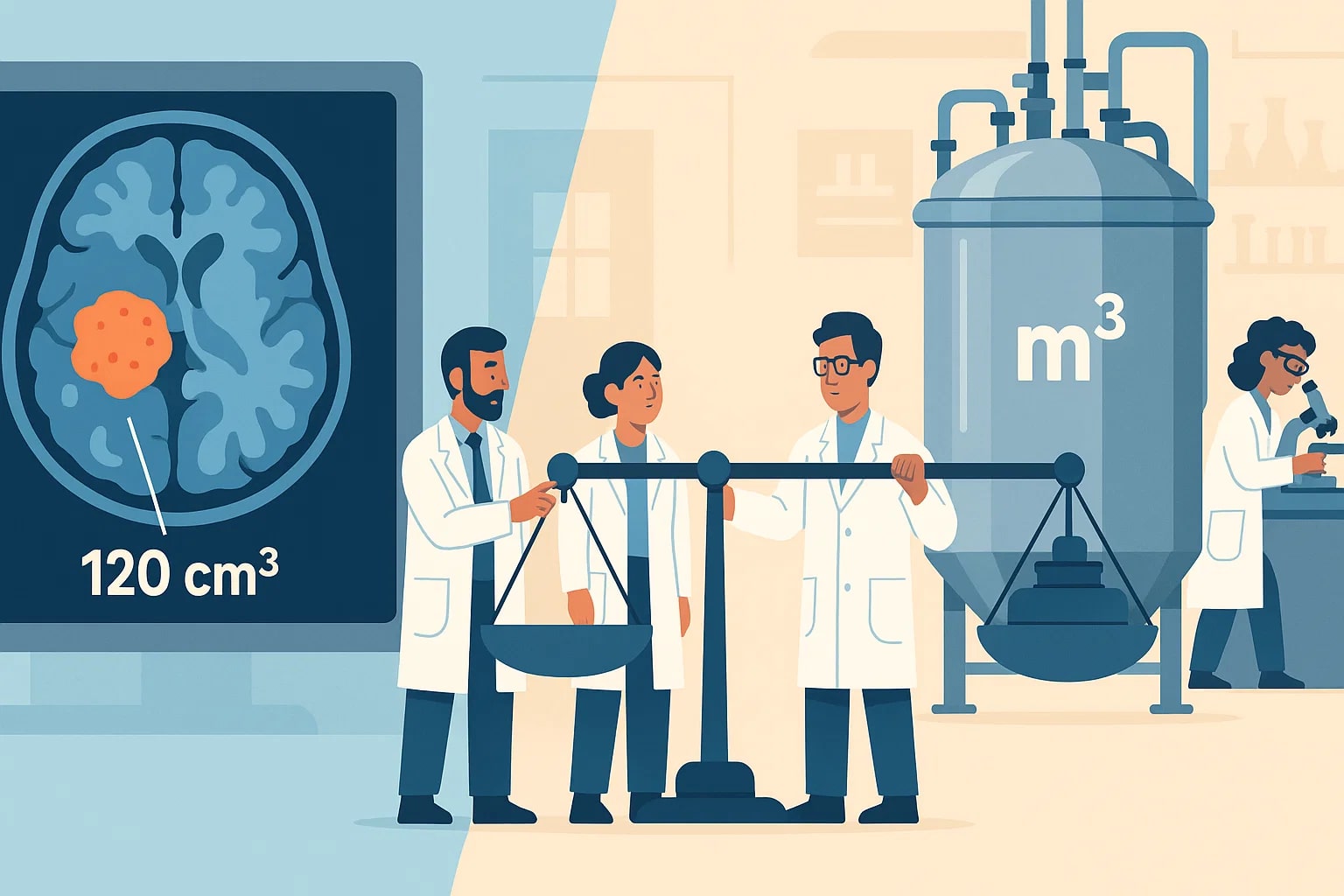cubic centimeter to cubic meter – How to convert cm³ to m³
The conversion from cubic centimeters to cubic meters is a journey from the microscopic to the monumental. While cubic centimeters are common in medical scans, packaging, and small-scale science, cubic meters dominate architecture, storage, and large systems. Here is how the two connect, why the conversion matters, and how biotech and medicine use it in powerful ways.
What is a cubic centimeter (cm³)?
A cubic centimeter represents the volume of a cube with each side measuring 1 cm. It equals 1 mL or 1⁄1000 liter. The cm³ is crucial in medicine, biology, and laboratory settings. For example, tumor volume in MRI scans or the size of an implant is often described in cm³.
What is a cubic meter (m³)?
A cubic meter is the volume of a cube with each side measuring 1 meter. It equals 1000 liters or 1,000,000 cm³. The unit is widely used for large-scale quantities: the air volume in a room, water in a reservoir, or the space inside industrial tanks.
Conversion formula – cubic centimeter to cubic meter
The scale difference is large, but the formula is simple:
1 m³ = 1,000,000 cm³
To convert cubic centimeters to cubic meters:1 cubic meter = cubic centimeter ÷ 1,000,000
To convert cubic meters to cubic centimeters:1 cubic centimeter = cubic meter × 1,000,000
Examples:
-
250,000 cm³ = 0.25 m³ -
2 m³ = 2,000,000 cm³

For quick and precise calculations across different volume units, use the Volume Converter or explore more Conversion Tools available on Jetcalculator.
Do you know?
-
Cubic centimeters in medical scans: MRI and CT imaging often measure organs or tumors in cm³. This allows doctors to track growth or reduction with high accuracy.
-
Cubic meters in hospital systems: Ventilation and oxygen supply for operating rooms are measured in m³ of air, ensuring patient safety on a larger scale.
-
Everyday comparison: A sugar cube is about 1 cm³. It would take one million sugar cubes to equal a cubic meter, showing the dramatic size leap.
Biotech and Imaging – cm³ to m³ in practice
In modern medicine, both small and large volumes matter. When a radiologist studies an MRI scan, the tumor volume might be calculated as 120 cm³. This precision helps oncologists determine treatment options and track progress. But step outside the imaging room, and the hospital itself operates with systems that rely on cubic meters. Air exchange rates, water supply, and even waste storage are calculated in m³ to keep everything running smoothly.
Biotechnology also bridges these scales. A researcher may measure the volume of a micro-sample in cm³ during lab tests, while the bioreactor that scales the experiment for production is designed in m³. From the patient’s body to the facility’s infrastructure, cm³ and m³ work together to ensure innovation reaches real-world application.
This combination highlights why the conversion formula is so important. It links life-saving micro-measurements with the broader systems that sustain healthcare and biotechnology industries.

From a single cell to a whole system
The formula 1 m³ = 1,000,000 cm³ is not just math. It symbolizes how measurement connects the smallest details in biology to the largest operations in healthcare. A doctor may describe a tumor in cm³, while the hospital’s oxygen tanks are managed in m³. A biotech startup may test a new therapy in tiny cm³ chambers, then scale it up to m³ facilities for global production.
By mastering this conversion, you can see how precision in the small world builds into capacity in the large world. It is the bridge that ties together life, science, and infrastructure.

